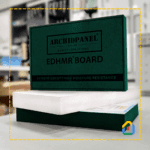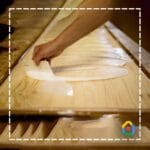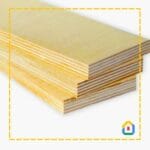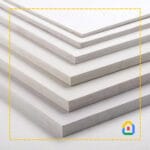Plywood is a versatile building material that has become an integral part of construction and interior design in India. Its widespread use can be attributed to its durability, strength, and aesthetic appeal. From furniture to flooring and everything in between, plywood plays a crucial role in shaping our living spaces. In India, there is a wide variety of plywood types available, each serving a specific purpose. In this article, we will delve into the different types of plywood commonly found in India.
1. Commercial Plywood:
Commercial plywood is one of the most widely used types in India. It is known for its affordability and versatility, making it suitable for a range of applications. This plywood is made from several layers of wood veneers glued together with adhesive. It is typically used for furniture, cabinets, partitions, and interior paneling. Commercial plywood comes in various grades, with MR (Moisture Resistant) and BWR (Boiling Water Resistant) being the most common.
2. Marine Plywood:
Marine plywood is specially designed to withstand exposure to water and moisture. It is constructed with waterproof adhesive, making it ideal for applications in areas prone to high humidity, such as boat building, outdoor furniture, and bathroom cabinets. Marine plywood is costlier than commercial plywood but offers excellent durability in wet conditions.
3. BWP Plywood (Boiling Water Proof Plywood):
BWP plywood, as the name suggests, is designed to be completely waterproof. It is made using high-quality adhesive that can withstand boiling water without delaminating. This type of plywood is used in outdoor applications, such as making doors, window frames, and exterior furniture. BWP plywood is expensive but offers superior resistance to water and moisture.
4. Flexible Plywood:
Flexible plywood, also known as bendable plywood, is designed to be pliable. It can be bent and shaped easily without breaking, making it suitable for curved furniture and interior designs. This type of plywood is often used in making curved panels, arches, and decorative elements.
5. Fire Retardant Plywood:
Fire retardant plywood is treated with special chemicals to reduce its flammability. It is commonly used in areas where fire safety is a concern, such as commercial buildings, theaters, and public spaces. While it may cost more than regular plywood, the added fire resistance is a valuable feature in certain applications.
6. Exterior Grade Plywood:
Exterior grade plywood is designed for outdoor use and can withstand exposure to the elements. It is often used for roofing, cladding, and outdoor furniture. It is manufactured with superior adhesives and is more durable than standard commercial plywood when used in exterior applications.
7. Decorative Plywood:
Decorative plywood is crafted with a specific aesthetic appeal in mind. It comes in various veneer finishes, including hardwood veneers like teak, oak, and walnut. This type of plywood is used for high-end furniture, wall paneling, and cabinetry to add a touch of luxury and elegance to interior spaces.
8. Shuttering Plywood:
Shuttering plywood is primarily used in the construction industry for creating temporary molds or formwork for concrete casting. It is designed to be strong and rigid to withstand the weight and pressure of concrete. Once the concrete has set, the formwork can be removed and reused.
9. Pre-laminated Plywood:
Pre-laminated plywood comes with a decorative laminate layer on top of the plywood surface. This eliminates the need for further finishing, making it a popular choice for modular furniture, kitchen cabinets, and interior partitions.
Conclusion:
In the world of construction and interior design in India, plywood is indeed a versatile and indispensable material. The availability of various types of plywood allows builders, designers, and homeowners to choose the right product for their specific needs, whether it’s creating sturdy furniture, crafting elegant interiors, or ensuring the longevity of outdoor structures. Understanding the differences between these types of plywood is essential for making informed decisions that contribute to the beauty and durability of our living spaces.

























